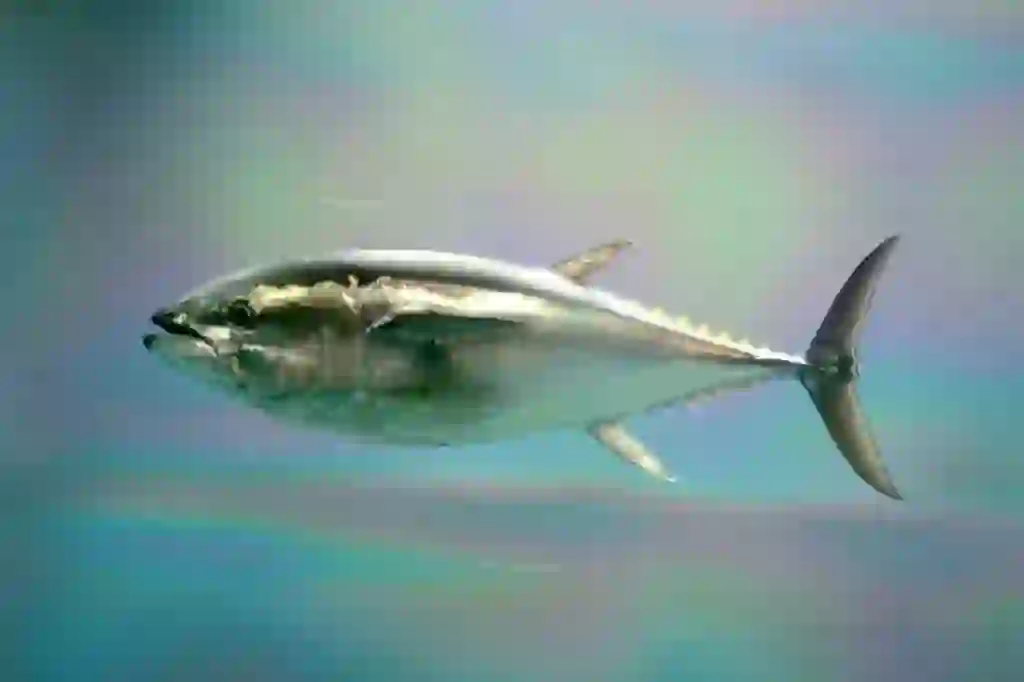
Tuna
Tuna
Tuna
If you were asked “What is your favorite animal?”, many people would think of some kind of animal. However, it may be difficult to think of something when asked “What is your favorite fish?” Even if you do think of something, it may be about fish as an ingredient. As for fish as an ingredient, Japanese people are thought to like tuna by people overseas. Indeed, tuna is a familiar ingredient for Japanese people in general households and restaurants. However, I get the impression that not many people know about the ecology of tuna. So let’s take a closer look at the ecology of tuna!
Tuna Basic Infomation
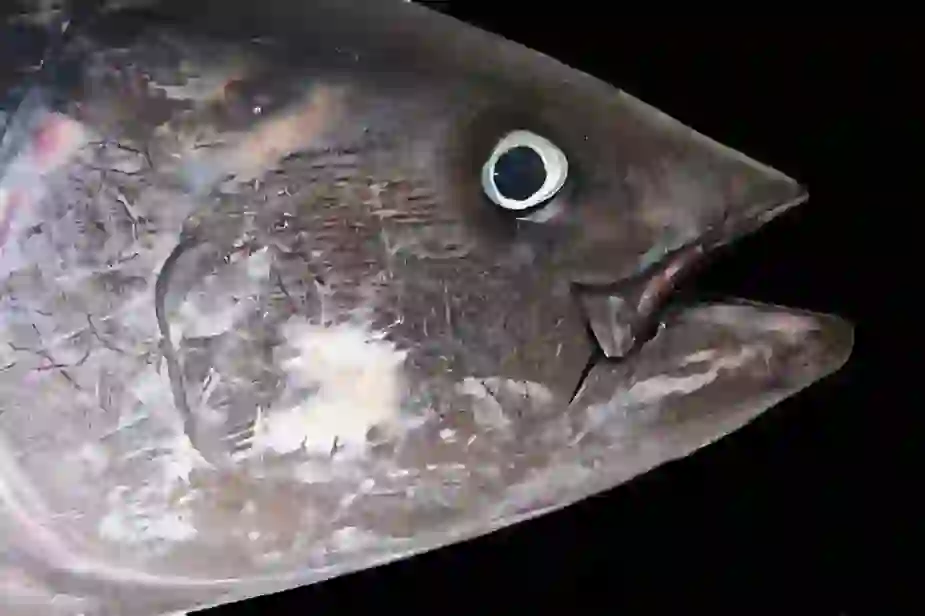
Perciformes-Scombridae-Tuna genus.
Length:3m or more weight:400 kg or more. ※It is a reference to the Japan and popular bluefin tuna.
When it comes to tuna, people tend to think of a large fish, and it is often talked about on TV. Many people may remember it because it can fetch eye-popping prices at auctions.
The shape of the tuna is spindle-shaped and feels powerful. On the other hand, many types of tuna have small fins, which may make them look cute at first glance.
However, the tail fin is large and can be said to be the source of propulsion. While many fish swim by wriggling their bodies from side to side, tuna swim only by swinging their tail fins from side to side.
Tuna Q&A

Where does tuna get its name?
In English, it is called "tuna", but in fact, in the case of Japanese, it is called "maguro". Why is it called maguro in Japanese this time? Here are three possible theories about its origin.
The first theory is that since the eyes of tuna are large and black, the word has changed to "black eyes = meguro (maguro)".
※Black eyes are called meguro in Japanese.
You don't often look closely at the eyes of fish, but it is true that tuna eyes have big eyes that can be sucked in. Isn't that quite a credible theory?
The second theory is that the freshness of tuna is the origin of the product. In the days when freezing technology was not as developed as it is today, when stored at room temperature, it immediately turned black. It is said that "makkuro" became "maguro". Nowadays, it is almost never stored at room temperature, so it is a little difficult to get an image.
The third theory is that the physical characteristics of tuna are the origin of the theory. Tuna has a black back color, and bluefin tuna caught in Japan has a particularly pronounced shade. It is said that the tuna that usually forms a flock became "tuna" because it looks like a small black mountain swimming in the sea.
※A pitch-black small mountain is called a makkuroi oyama in Japanese.
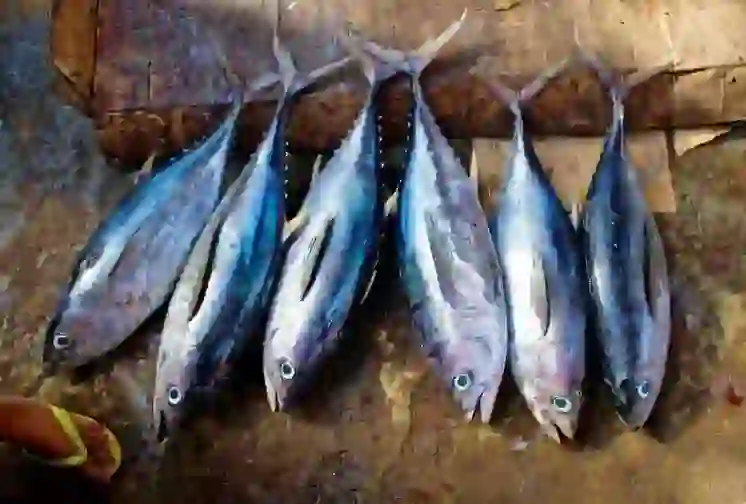
Why do tuna live in the open ocean?
Tuna is a migratory fish that swims in the open ocean, so it lives in seas all over the world. It prefers tropical and temperate waters, and one of its characteristics is that the distribution range and depth of habitat vary depending on the species.
Bluefin tuna live in the northern hemisphere, while southern bluefin tuna live in the southern hemisphere. It has been found that bigeye tuna swim in deeper layers than other species and come up to shallower layers at night.
Although tuna is often thought of as swimming all over the world, it actually just lives in different areas depending on the species.
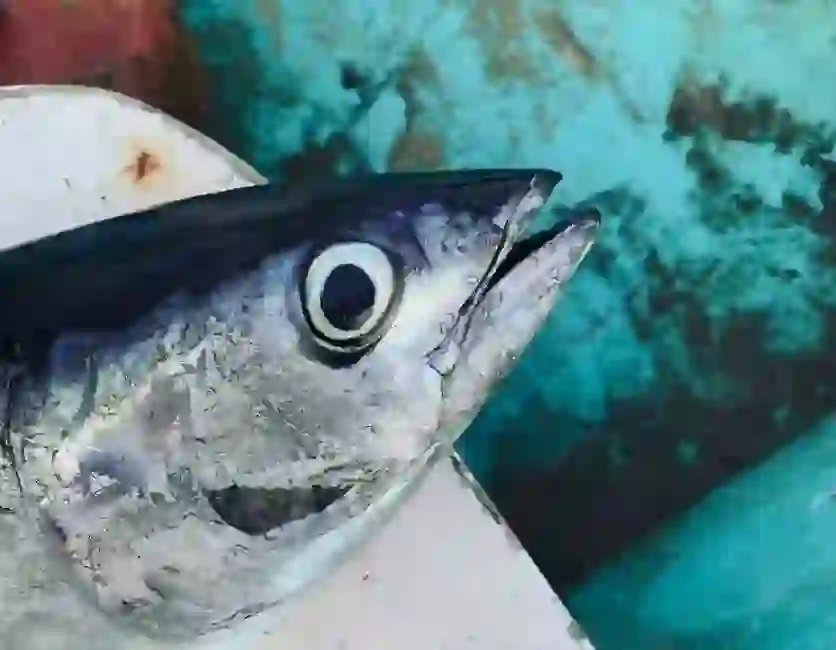
What does tuna eat?
Tuna is a migratory fish that inhabits the open ocean with few organisms that serve as food. It is a top predator in the marine food chain and mainly preys on mackerel, sardines, shrimp, and squid.
Since they swim powerfully, they require a lot of energy and a small amount is not enough. Tuna farming is also thriving, and they are fed an unimaginable amount of food. They eat 3-5% of their body weight in food twice a day, and it takes 13kg of food to gain 1kg of body weight.
Of course, this estimate cannot be directly applied to wild tuna, but it is easy to imagine that they consume a considerable amount of food. They may be struggling to secure food.
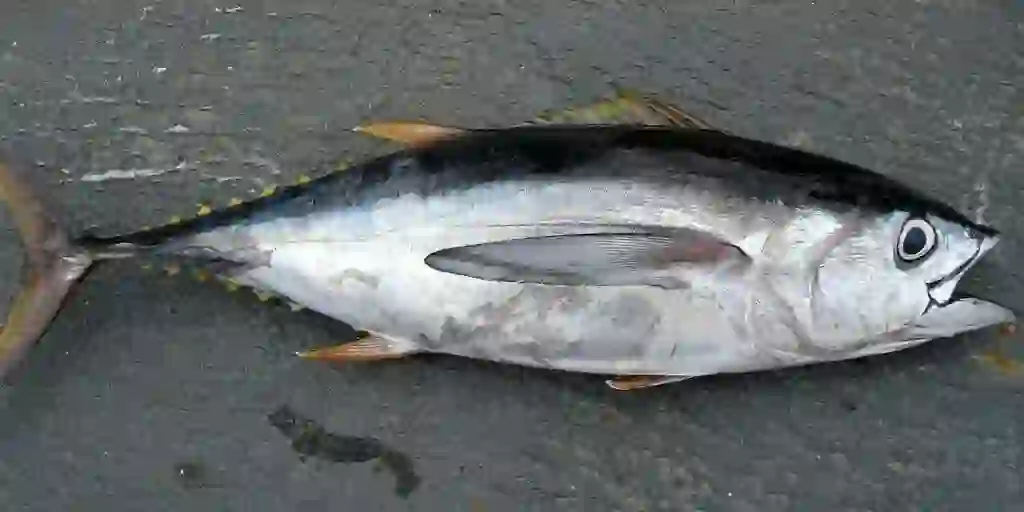
What is the swimming speed of tuna?
Tuna are said to swim quite fast, with speeds of up to 80km per hour or a maximum instantaneous speed of 160km per hour. However, recent research has shown that these speeds were incorrect.
The latest research method called “biologging” involves attaching measuring instruments to the subject and recording information. According to the latest technology, the true average swimming speed of tuna was 7km per hour. This is about the same speed as jogging for humans.
However, it is fundamentally wrong to think of land and sea speeds in the same way. In the water, there is always a load on the body because it is in the water, and humans get tired quickly. Tuna swim continuously in this state, so you can see how amazing they are beyond their speed.
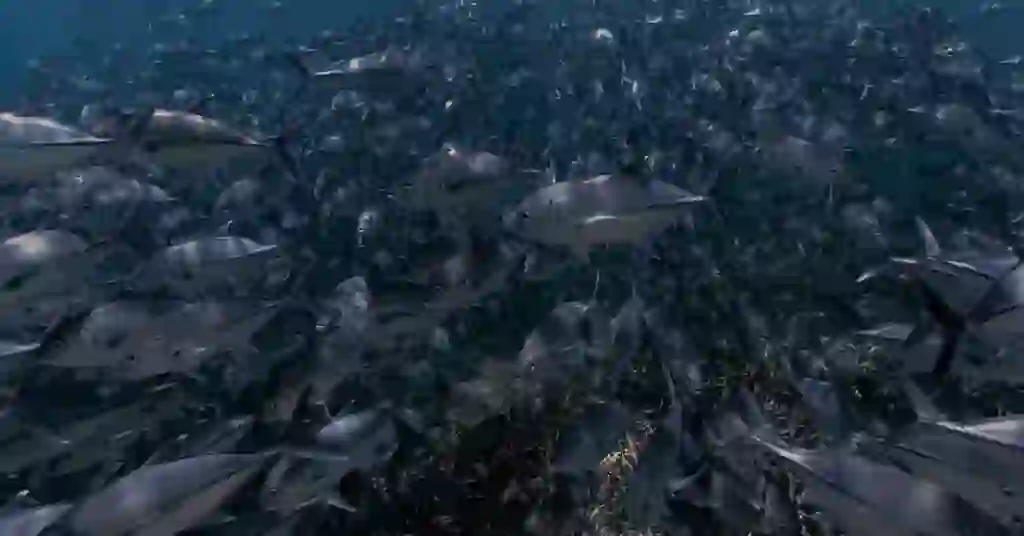
Is it true that tuna don't usually sleep?
It is well known that tuna swim continuously for 24 hours without rest. Tuna do not sleep, but swim while sleeping. There are said to be two reasons why tuna continue to swim.
The first reason is for breathing and the second is to avoid sinking. Tuna breathe through their gills, but unlike other fish, they cannot move their gills. They breathe by opening their mouths and swimming to take in seawater. In other words, if they stop swimming, they cannot breathe and will suffocate.
Tuna also have a very high-density body and a large specific gravity compared to seawater, so if they don’t keep swimming, they will sink. They gain buoyancy by swimming and avoid sinking.
Now that we know why tuna don’t sleep, it doesn’t mean that they always swim at the same pace. At night, they slow down their speed to lower their metabolism and swim in a state like an interval.

What are the natural enemies of tuna?
The top predator in the food chain, the tuna, has no natural enemies that are truly enemies. If we had to name a natural enemy, it would be humans, especially the Japanese.
Japanese culture has a long history of eating tuna, and traces of this can be found in Jomon period ruins. Japan is a major tuna-consuming country, consuming about one-fifth of the world’s tuna.
Of course, there may be people who don’t like it, but for tuna, humans may be the most terrifying natural enemy.

Is it true that tuna is about to become extinct?
Overfishing of tuna is often a problem. Tuna originally had a small population, and when the Japanese food boom hit, it was overfished all over the world. Some groups are calling for a ban on tuna fishing, and international resource conservation is being emphasized.
However, some argue that it is already too late, and in fact, five types of tuna have been designated as endangered species. Japan, a major tuna-consuming country, is particularly in the spotlight, and it can be said that management of fishing by the country will be essential in the future.
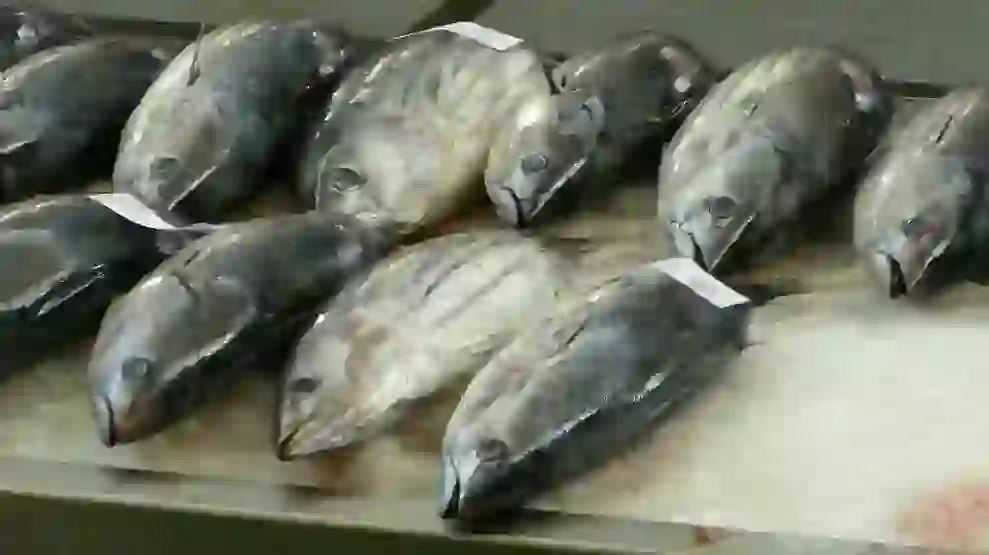
Is it true that bonito is used as a raw material for canned tuna?
It's true.
In the case of Japan, when it comes to tuna, Toro is famous as a luxury product. However, in ordinary households, canned "canned tuna" often appears, and it is used in various dishes.
As the name suggests, canned tuna is made by flakes of tuna and canned it. In fact, tuna is a general term for fish classified as a member of the tuna family. However, bonito is also classified in the tuna family, so there are also canned tuna made from bonito. Therefore, depending on the product, it may be called "canned tuna" or "canned bonito". It's a bit complicated, isn't it?

Would you like to become a part of the 'Animalbook.jp'?
Turn your knowledge into Q&A and share it with the world. ※Publication will be activated after purchase. Let's share information together!
Tuna Type of List
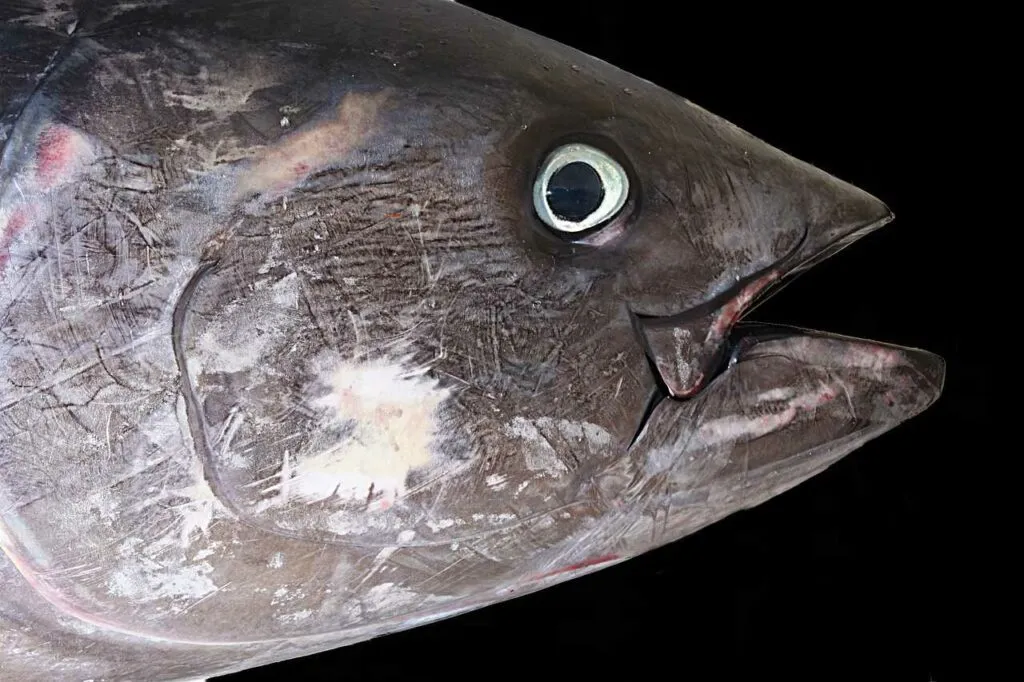
- Pacific Bluefin Tuna
- Northern Bluefin Tuna
- Southern Bluefin Tuna
- Bigeye Tuna
- Albacore
- Yellowfin Tuna
- Longtail Tuna
- Blackfin Tuna
Information
Congratulations! You are the first commenter!

Create Your Favorite List!
Tuna
Save the animals you love! Build your own list to quickly revisit your favorites later.

Would you like to leave a comment?
※Please note: This is for the purchase of rights to post comments within the article.
Find Your Favorites!
Our shop offers a unique and attractive selection of goods themed around various animals.
Tuna References

- Wikipedia https://ja.wikipedia.org/wiki/マグロ
- WWFジャパン https://www.wwf.or.jp/activities/basicinfo/63.html
- 語源由来辞典 http://gogen-allguide.com/ma/maguro.html
- 近畿大学水産研究所 http://kindaifish.com/frame/picture_book/maguro/
- NATIONAL GEOGRAPHIC https://natgeo.nikkeibp.co.jp/nng/article/20140605/401161/
- TURINEWS https://tsurinews.jp/44176/
Tuna Introduction of media used

出典:https://pixabay.com/images/id-1617467/

出典:https://pixabay.com/images/id-954073/

出典:https://unsplash.com/photos/KM146O68w3I

other
出典:https://unsplash.com/photos/5BlIoNsg1zY

出典:https://pixabay.com/images/id-69319/

出典:https://unsplash.com/photos/LrZzWxERKso

food
出典:https://pixabay.com/images/id-5945114/
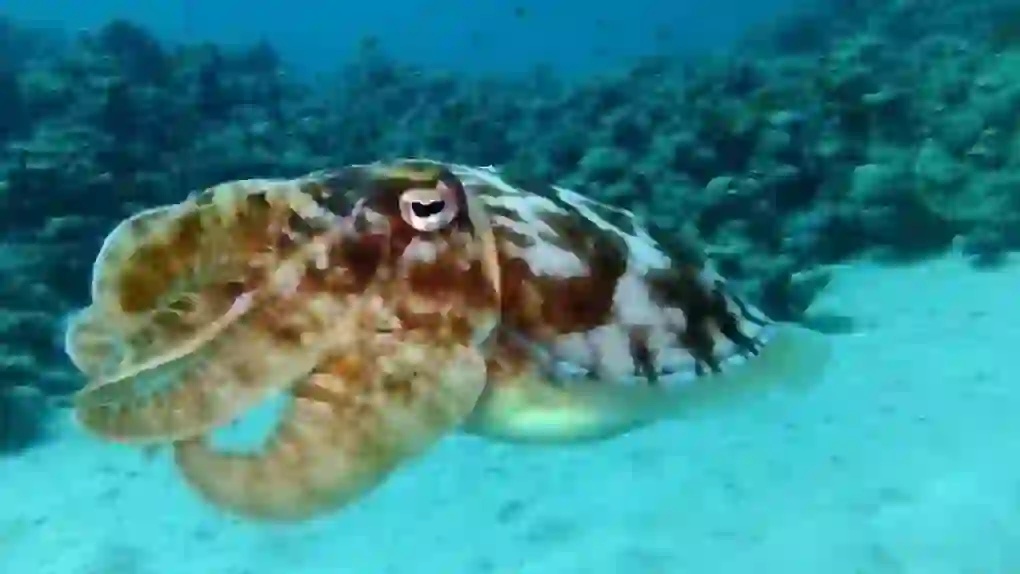
food
出典:https://unsplash.com/photos/j8BRxbtTwTQ

出典:https://unsplash.com/photos/pJaBWy2WWFc

other
出典:https://pixabay.com/images/id-2404800/

出典:https://pixabay.com/images/id-244415/

出典:https://pixabay.com/images/id-3646480/

other
出典:https://www.pexels.com/ja-jp/photo/5950514/

Help Enrich Our Animalbook.jp with Your Media!
We are constantly looking to expand and enrich our Animalbook.jp with amazing photos and videos of animals. If you have any media that you'd like to share, please contribute and help us showcase the beauty and diversity of the animal kingdom. Your submissions will be credited and featured in our encyclopedia, reaching a wide audience of animal lovers.
















